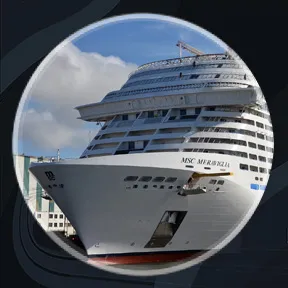The Ship that Flew | What Happened to Plainview?
In the late 1950’s a new threat emerged from the Soviet Union for which the Americans were seemingly caught off guard.
The latest generation of Soviet nuclear-powered submarines could reach incredible speeds. The Alfa-Class submarine under development at the time would eventually be capable of travelling at 41 knots (76 kph/47 mph) while fully submerged.
At such speeds, these submarines could follow American fleets while easily evading ASW ships. Large, fast, ocean-going hydrofoils seemed like the answer.
The principle behind a hydrofoil was simple enough; by using water as a medium of flight, much like an airplane uses air, a hydrofoil could ‘fly’ rather than plow through water.
Using a set of underwater wing-like structures called foils, these ships could lift out of the water as they accelerated, significantly reducing drag and allowing for much higher speeds and efficiency.
The first practical hydrofoil was demonstrated in 1906 by Italian inventor Enrico Forlanini.
In the decades that followed, hydrofoils were progressively refined and in the 1950’s the first passenger hydrofoils were beginning to emerge on rivers and lakes.
Almost all of these early hydrofoils used a configuration commonly referred to as ‘surface-piercing’ where the foils operate along the surface of the water.
The configuration is dynamically stable and self-correcting as a result of the foil’s shape (typically curved) and the position of the center of gravity in relation to the foil.
A major drawback is that operation along the water’s surface makes surface-piercing hydrofoils easily disturbed by waves and rough conditions. Surface-piercing hydrofoils are generally considered unsuitable for open ocean travel.
In the 1950’s the U.S. Navy took significant interest in a second hydrofoil configuration commonly referred to as ‘fully submerged’. Unlike surface-piercing hydrofoils, fully submerged hydrofoils have foils that operate entirely underwater beneath waves. This makes them far more suitable in rough conditions and open water.
A major drawback is that they are not dynamically stable and require continual adjustments to the foil angle of attack to vary the lift generated. For decades an automated method of controlling the foils remained elusive.
With new emerging technologies in the 1950's and 1960's, like sophisticated sensors, autopilots and computers, the fully submerged hydrofoil configuration became far more practical.
The U.S. Navy saw them as a potentially ground-breaking solution, ideally suited for ASW. Research and development efforts would culminate in a series of prototype ships, the most impressive being the 320-ton USS Plainview.


































